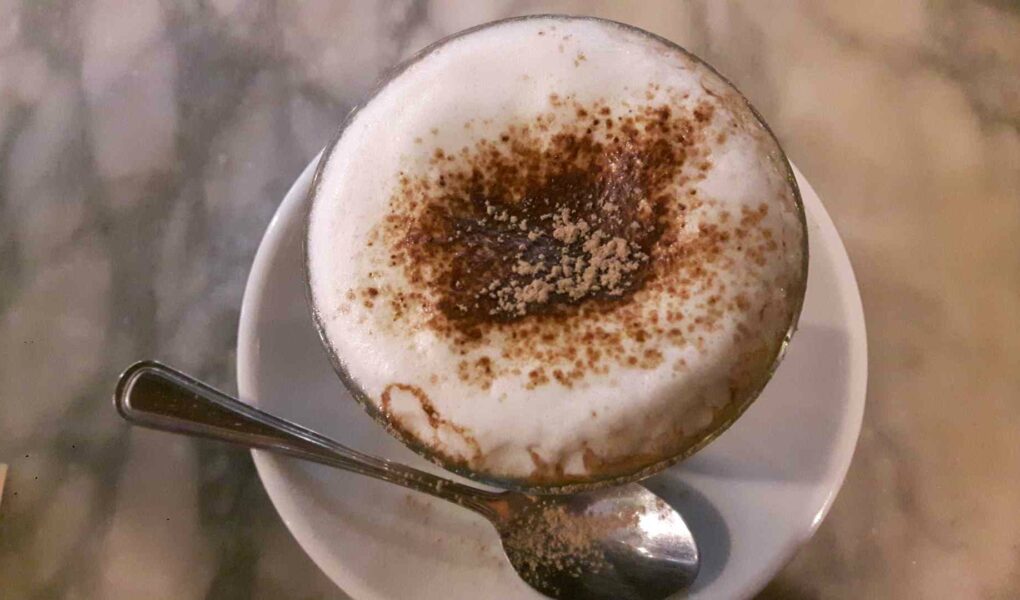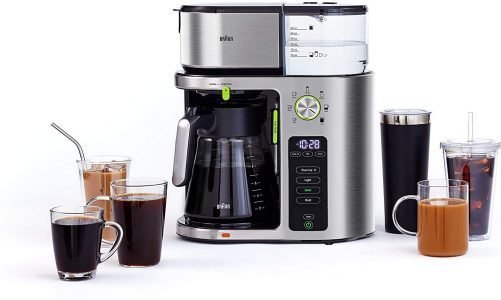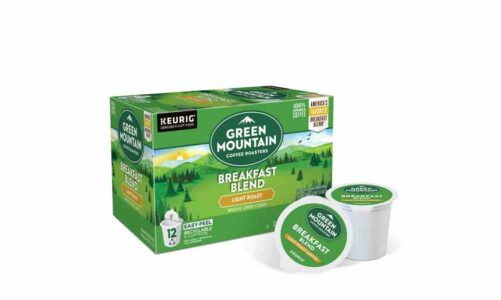The cappuccino is a popular espresso-based drink that originated in Italy and is now enjoyed all over the world, but you probably already knew that. We want to delve deeper into this coffee beverage and learn more about what is a cappuccino.
Simply put, it’s a coffee drink made with espresso, steamed milk, and milk foam. The ingredients are layered in a specific way to create a beautiful and delicious drink that’s perfect for any time of day. In this post, we’ll go into more detail about the history and preparation of cappuccinos, as well as some tips for making the perfect cup at home.
What Is a Cappuccino

A cappuccino is a popular espresso-based drink that originated in Italy. It is made by combining one-third espresso, one-third steamed milk, and one-third milk foam. The drink is named after the Capuchin friars, whose brown hooded robes are said to resemble the color of the drink’s foam.
Cappuccinos are known for their creamy texture, smooth taste, and balanced flavors, making them a favorite among coffee lovers worldwide.
Components of a Cappuccino
A cappuccino is made up of three components: espresso, steamed milk, and milk foam. The espresso is the foundation of the drink and provides the bold, rich coffee flavor. The steamed milk adds a creamy texture and helps balance the bitterness of the espresso. The milk foam on top gives the drink its signature look and provides a light, frothy texture.
Cappuccino vs. Other Coffee Drinks
Compared to other coffee drinks, a cappuccino has a more balanced flavor profile due to the equal parts of espresso, steamed milk, and milk foam. It has less milk than a latte and less foam than a macchiato. A cappuccino is also typically served in a smaller cup than other coffee drinks.
Different Variations of Cappuccino
There are many different variations of the cappuccino, each with its own unique twist. For example, a dry cappuccino has more foam and less milk than a traditional cappuccino, while a wet cappuccino has more milk and less foam. A flavored cappuccino adds syrup or other flavorings to the drink, and of course there are now many different milk types such as almond and soya which change the texture and flavor of the cappuccino.
What Does Cappuccino Taste Like?
A cappuccino has a bold, rich coffee flavor with a creamy texture and light, frothy foam on top. The milk and foam help balance out the bitterness of the espresso, resulting in a smooth and well-rounded taste. Compared to the latte, the cappuccino allows you to enjoy more of the espresso flavors without being overpowered by milk, yet still offering the creamy texture of the milk.
Why Is It So Popular?
Cappuccino is a popular coffee drink worldwide because of its balanced and flavorful taste. It’s a versatile drink that can be enjoyed any time of day and can be customized with different variations and flavorings. The cappuccino is also a staple in Italian coffee culture and has become a symbol of the country’s rich coffee history.
History of Cappuccino
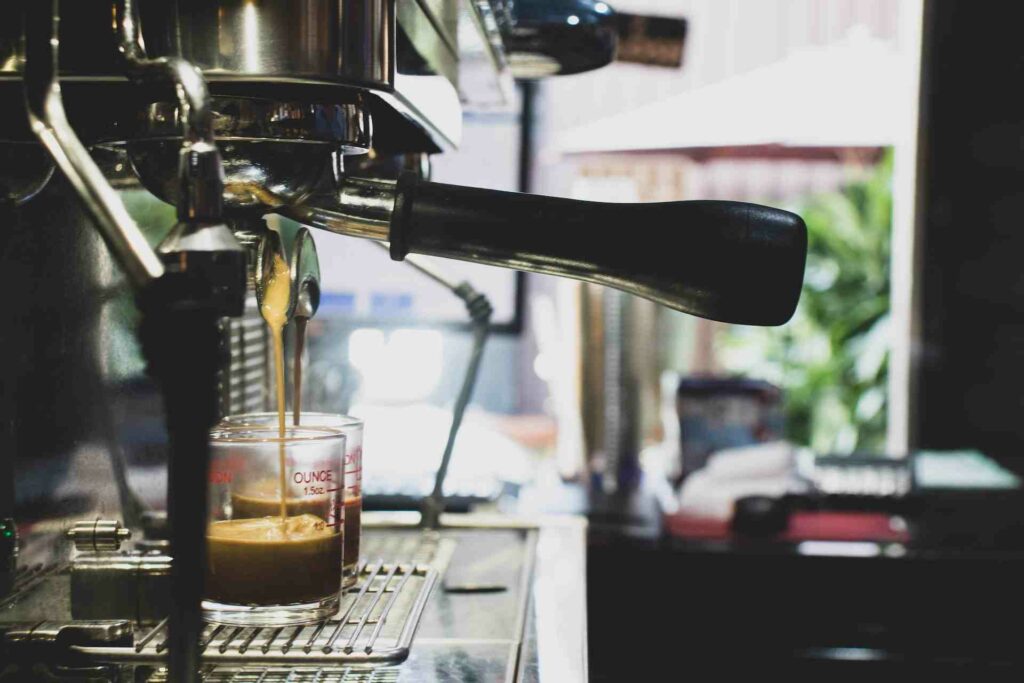
The history of cappuccino dates back to the early 1900s in Italy, where it was first created as a variation of the espresso. The name “cappuccino” comes from the Capuchin friars, a Catholic religious order who wore distinctive brown hoods that resembled the color of the espresso and milk foam in the coffee. The first cappuccinos were made with equal parts of espresso, steamed milk, and milk foam and were typically consumed in the morning.
Spread to Europe and the Rest of The World
Cappuccino gained popularity in Europe in the mid-1900s and quickly became a staple in cafes and restaurants across the continent. In the United States, cappuccino was first introduced in the 1980s during the rise of the specialty coffee industry. Today, cappuccino is enjoyed all over the world and has become one of the most recognizable coffee drinks.
Cappuccino in Modern Times
In recent years, cappuccino has evolved beyond its traditional recipe and has become a canvas for experimentation and creativity in the coffee industry. Baristas and coffee shops are now offering different variations of cappuccino, including flavored syrups, latte art, and different milk alternatives like almond or oat milk. Despite these changes, the classic cappuccino recipe remains a beloved and iconic coffee drink.
Cappuccino Culture
Cappuccino has a rich history and cultural significance, particularly in Italy and the United States.
The Role of Cappuccino in Italian Culture
In Italy, cappuccino is primarily a breakfast drink and is consumed in the morning with a pastry or a croissant. In traditional Italian culture, it is considered inappropriate to drink cappuccino after 11 a.m. or with a meal, as the milk in the cappuccino is believed to interfere with digestion. Moreover, Italians view cappuccino as an art form, and the quality of the cappuccino is judged by the balance of the coffee, milk, and foam, as well as the temperature and texture of the milk.
Cappuccino in American Coffee Culture
In the United States, cappuccino has evolved to become an all-day drink, and is commonly consumed with meals. However, it is often seen as a luxury item or a special treat due to its higher price point compared to regular coffee. American coffee shops also offer a wider variety of flavored cappuccinos, such as pumpkin spice or vanilla, which are not typically found in Italy.
The Rise of Specialty Coffee Shops and Cappuccino Art
The popularity of cappuccino has led to the rise of specialty coffee shops, which focus on high-quality coffee drinks and often feature unique latte art. Skilled baristas can create intricate designs in the foam of a cappuccino, such as hearts, flowers, or even portraits. Cappuccino art has become a popular trend on social media platforms like Instagram, where users share photos of their elaborate designs. This artistic aspect of cappuccino culture has further elevated its status as a gourmet coffee drink.
The Art of Making Cappuccino

Cappuccino making is considered an art, and the quality of the final product relies heavily on the barista’s skills. Here are the basic steps involved in making a cappuccino:
Preparing the Espresso Shot
To make a cappuccino, you need a single or double shot of espresso. The espresso is prepared by forcing hot water through finely ground coffee beans under high pressure.
Steaming and Frothing Milk
The milk is steamed and frothed to create the creamy texture that characterizes a cappuccino. The milk is heated with steam and then frothed to create a light foam. The goal is to create a velvety texture that adds sweetness and creaminess to the coffee.
Pouring and Layering the Drink
Once the espresso shot and milk are ready, the barista pours the espresso shot into a cup, followed by the steamed milk. Finally, the frothed milk is spooned on top of the drink, creating a layer of foam.
Tips for Making the Perfect Cappuccino
Achieving the perfect cappuccino requires attention to detail and practice. Here are some tips to keep in mind:
- Use fresh, high-quality coffee beans.
- Make sure the espresso shot is extracted properly, with the right amount of pressure and water temperature.
- Pay attention to the milk temperature and texture, which should be around 140°F and creamy.
- Pour the milk slowly and carefully to create a layered effect.
- Experiment with different types of milk, such as whole milk, skim milk, or plant-based milk, to find the one that suits your taste preferences.
By following these steps and tips, you can make a delicious cappuccino that showcases the best of the coffee and milk flavors.
Health Benefits and Risks of Cappuccino
Cappuccino not only provides a delicious taste and a caffeine boost, but it also comes with some potential health benefits. Here are some benefits and risks of consuming cappuccino.
Benefits of Drinking Cappuccino
Cappuccino, like other coffee drinks, has been linked to several potential health benefits, including:
- Improved mental alertness: Caffeine in cappuccino can help increase mental alertness and concentration.
- Antioxidant properties: Cappuccino contains antioxidants that can help fight inflammation in the body.
- Reduced risk of type 2 diabetes: Studies have shown that consuming coffee, including cappuccino, may help reduce the risk of type 2 diabetes.
- Lower risk of liver disease: Moderate coffee consumption has been associated with a lower risk of liver disease, including liver cancer.
Potential Risks of Consuming Too Much Cappuccino
While cappuccino can be a part of a healthy diet, it can also have some potential risks if consumed in excess. Some of the potential risks include:
- Increased anxiety: Caffeine in cappuccino can cause jitters, nervousness, and anxiety, especially when consumed in large quantities.
- Sleep disturbance: Consuming caffeine in the afternoon or evening may interfere with sleep patterns.
- Gastrointestinal issues: Excessive caffeine intake can lead to digestive problems such as acid reflux, heartburn, and stomach ulcers.
- Addiction: Like any caffeinated beverage, excessive cappuccino consumption can lead to addiction and dependence.
How to Enjoy Cappuccino in Moderation
To enjoy the benefits of cappuccino without experiencing the potential risks, it is essential to consume it in moderation. Here are some tips to help you enjoy cappuccino in moderation:
- Limit consumption to 1-2 cups per day.
- Choose decaf or half-caff cappuccino if you are sensitive to caffeine.
- Avoid consuming cappuccino in the afternoon or evening to prevent sleep disturbances.
- Consider using low-fat milk to reduce calorie and fat intake.
- Enjoy cappuccino as part of a balanced diet and active lifestyle.
Cappuccino FAQs
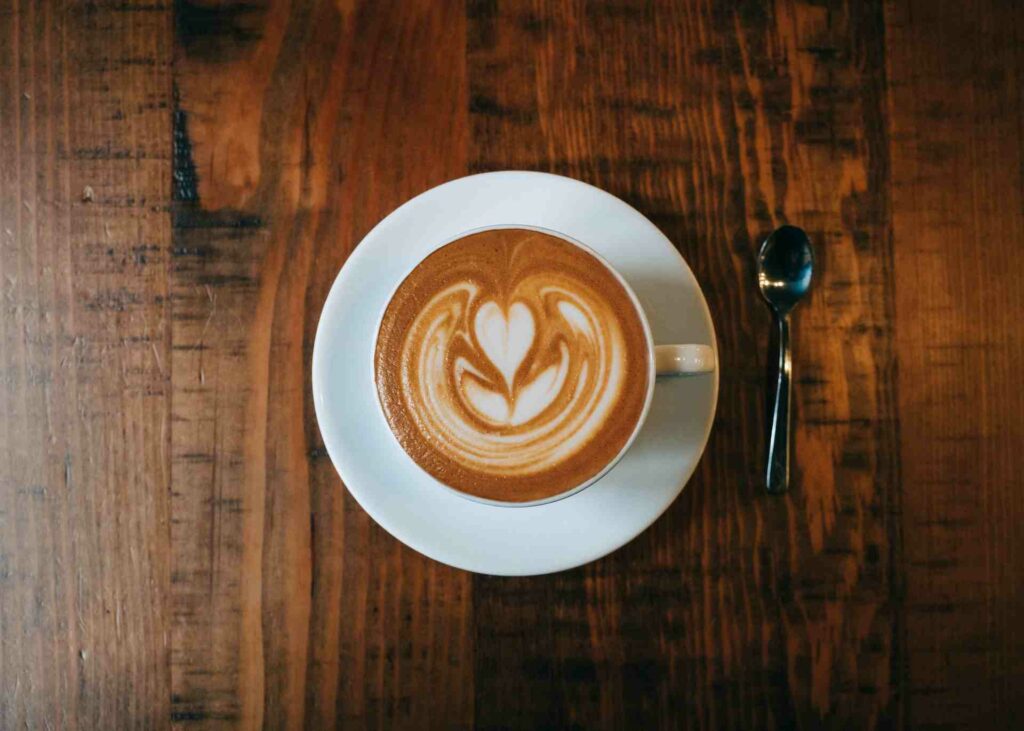
What is the difference between a cappuccino and a latte?
A cappuccino and a latte are both espresso-based drinks that contain milk. However, a cappuccino typically has a higher ratio of foam to milk than a latte, resulting in a stronger espresso flavor. A cappuccino is usually served in a smaller cup than a latte.
How many calories are in a cappuccino?
The number of calories in a cappuccino can vary depending on the size of the drink and the type of milk used. On average, a small cappuccino made with skim milk contains around 70-100 calories.
Is cappuccino suitable for people with lactose intolerance?
Cappuccino contains milk, which makes it unsuitable for people with lactose intolerance. However, lactose-free milk can be used as an alternative.
Can you make a cappuccino without an espresso machine?
While an espresso machine is the traditional way to make a cappuccino, it is possible to make a cappuccino without one. A moka pot or French press can be used to make espresso-like coffee, and the milk can be steamed on the stove or in the microwave.
The Final Sip
So what is a cappuccino? A cappuccino is an espresso-based coffee drink that originated in Italy. It consists of a shot of espresso, steamed milk, and a layer of foam on top. Cappuccino has a rich history and cultural significance, particularly in Italy. However, it has become a popular drink around the world and can be found in most coffee shops. With its delicious taste and frothy texture, it’s no surprise that cappuccino is a beloved coffee drink by many.

